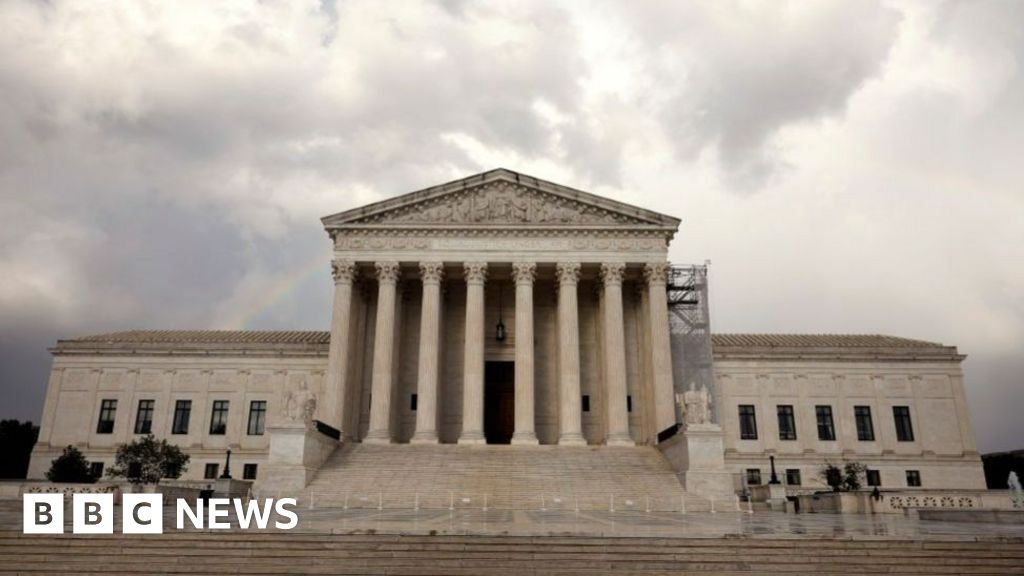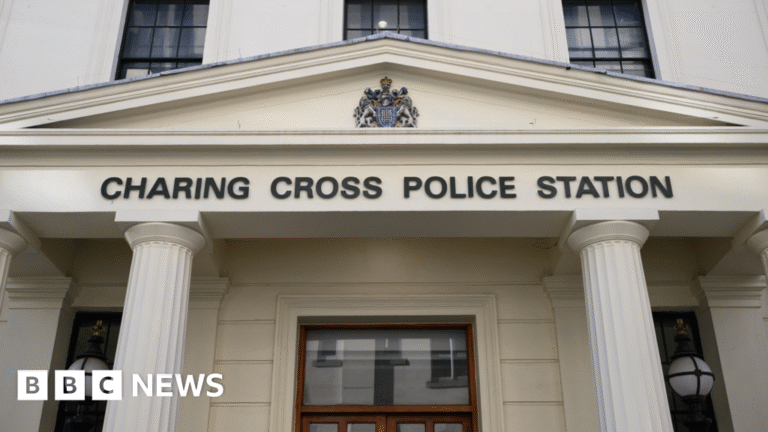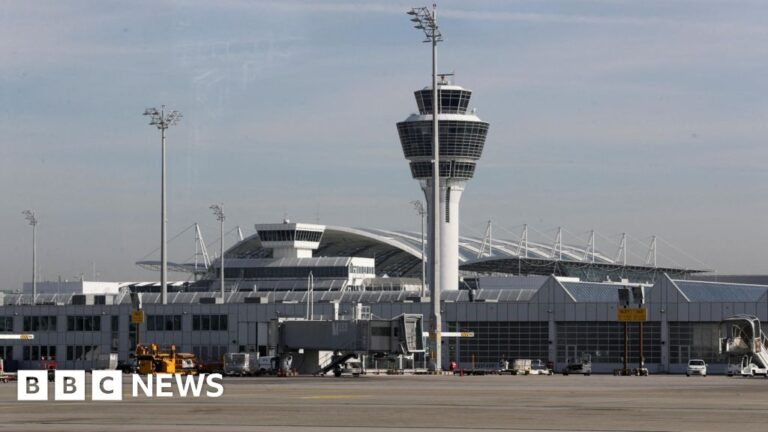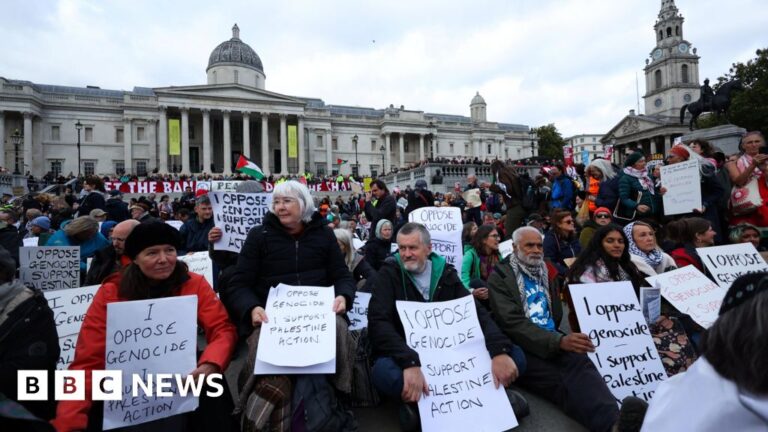New Supreme Court term will reshape Trump’s powers
The US Supreme Court begins its new term on Monday with a docket already full of potentially significant cases that could define the scope of Donald Trump’s presidential authority – and the prospect of more to come.
In the eight months that Trump has been back in the White House, he has tested the limits of executive power, unilaterally implementing new policies, slashing federal budgets and workforce, and attempting to bring previously independent agencies and institutions more directly under his control.
The latest brewing legal battle comes from the president’s attempts to take control of state National Guard units and deploy them in cities where he claims there is public unrest and rampant crime – over the objection of local and state officials.
In Oregon, a federal judge has issued orders blocking Trump’s deployment of troops to Portland. An appeals court is set to review the move in the coming days.
“This is a nation of constitutional law, not martial law,” Judge Karin Immergut, whom Trump appointed to the bench in his first term, wrote in her Saturday opinion.
“Defendants have made a range of arguments that, if accepted, risk blurring the line between civil and military federal power – to the detriment of this nation.”
Once the appellate court has its say, the Supreme Court could step in via its so-called “shadow docket”, issuing a ruling that could curtail Trump’s ability to use the military on US soil – or give him a free hand, at least temporarily.
Such reviews have become a more routine occurrence recently, as a majority of the Supreme Court justices, in response to emergency petitions from the Trump administration, has largely allowed the president’s actions to move forward while legal challenges play out.
“A tug of war between the Supreme Court and the lower federal courts is going to be a driving force in the coming term,” Samuel Bray, a professor at the University of Chicago Law School, said at a briefing last month.
The court’s reliance on this shadow docket has been criticised by left-leaning legal scholars and politicians as an improper use of the court’s authority. Its orders have typically been short, offering limited legal reasoning and leaving lower-level judges with minimal guidance.
“All Americans should be alarmed by the Supreme Court’s growing reliance on its shadow docket to resolve controversial and high-profile cases without any transparency – no substantive explanations, oral arguments, or reasoning,” Democratic Senator Cory Booker of New Jersey said earlier this year.
“This further pushes the Court’s deliberations and decisions out of view of public scrutiny and shields it from accountability.”
In the coming months, however, the court is set tackle questions of presidential power – and other high-profile controversies – head on, hearing oral arguments and issuing full decisions on their merits.
“It’s not going to be able to get away with one-page orders that don’t explain the reasoning,” said Maya Sen, a professor at the Harvard Kennedy School who specialises in the Supreme Court and US politics. “If they’re going to grant more power to the executive its going to have to explain why.”
The court is already scheduled to consider whether federal laws that prohibits the president from removing members of agencies designed by Congress to be independent from presidential influence infringe on executive authority.
The justices will also hear arguments in an expedited review of Trump’s attempt to fire Lisa Cook from her position as a governor on the influential Federal Reserve Board – a case that could dramatically increase the president’s power over American economic policy.
The US – and global economy – is also front and centre as Supreme Court justices will have a chance to decide whether many of Trump’s unilaterally imposed tariffs on foreign imports have adequate legal authority or should be voided.
The justices may also review Trump’s attempts to unilaterally cut federal spending and fire lower-level government employees, as well as his aggressive immigration and deportation policies.
While the court has not yet agreed to consider Trump’s attempt to terminate automatic citizenship for those born on US soil, it could do so in the coming months.
“The scope of executive power will be front and centre this term,” said Professor Jennifer Nou of the University of Chicago Law School, in an email to the BBC.
“The cases coming before the court will test the Trump administration’s highest political and economic priorities, whether tariffs or birthright citizenship.
“One question will be whether the justices will apply principles (eg the major questions doctrine) that it used to strike down signature Biden initiatives in a politically even-handed way.”
The court used its newly fashioned “major questions doctrine” to stymie Biden’s efforts at student loan forgiveness and environmental regulations, holding that Congress did not give him explicit authorisation to do so.
Presidential power is the central focus of this year’s Supreme Court term but cases involving several hot-button political and cultural controversies are also scheduled in the coming months.
The court will review whether a Colorado ban on conversion therapy – a controversial practice that attempts to use counseling to change a person’s sexual orientation or gender identity – violates constitutional free speech protections.
Also on the docket are two cases involving state bans on transgender athletes in interscholastic sport competition.
A Republican congressman in Illinois is challenging a state law that allows mailed ballots to be counted up to two weeks after election day.
A group of Louisiana conservatives have asked the court to strike down a provision of a voting rights law that requires states to draw congressional districts that guarantee Black voter representation equal to their population level.
And the Republican Party is targeting a decades-old law that prevents political candidates and parties from coordinating their campaign spending.
Over the past few years, this conservative-dominated Supreme Court has demonstrated a willingness to issue landmark new rulings that have dramatically shifted America’s legal landscape.
On topics like abortion rights, federal regulatory authority and the consideration of race in college admissions, the court has reversed decades of existing precedent.
Those decisions have contributed to a public view of the Supreme Court that has become increasingly polarised along partisan lines.
In a recent Pew Foundation poll, opinions of the nation’s highest legal body were split nearly evenly, with Republicans supportive and Democrats highly critical.
By the time the court issues its final decisions in this term, expected by the end of June next year, the 6-3 conservative majority on the court may have broken new ground, and once again fundamentally reshaped American law.
With additional reporting from Kayla Epstein.







